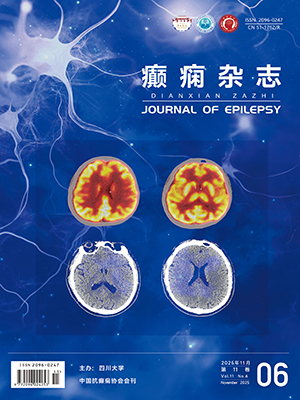| 1. |
Scheffer IE, Berkovic S, Capovilla G, et al. ILAE classification of the epilepsies: Position paper of the ILAE Commission for Classification and Terminology. Epilepsia, 2017, 58(4): 512-521.
|
| 2. |
Iraci N, Carotenuto L, Ciaglia T, et al. In silico assisted identification, synthesis, and in vitro pharmacological characterization of potent and selective blockers of the epilepsy-associated KCNT1 Channel. J Med Chem, 2024, 67(11): 912491-49.
|
| 3. |
Quraishi IH, Stern S, Mangan KP, et al. An epilepsy-associated KCNT1 mutation enhances excitability of human ipsc-derived neurons by increasing slack KNa currents. J Neurosci, 2019, 39(37): 7438-7449.
|
| 4. |
Barcia G, Fleming MR, Deligniere A, et al. De novo gain-of-function KCNT1 channel mutations cause malignant migrating partial seizures of infancy. Nat Genet, 2012, 44(11): 1255-1259.
|
| 5. |
Coppola G, Plouin P, Chiron C, et al. Migrating partial seizures in infancy: a malignant disorder with developmental arrest. Epilepsia, 1995, 36(10): 1017-1024.
|
| 6. |
Bonardi CM, Heyne HO, Fiannacca M, et al. KCNT1-related epilepsies and epileptic encephalopathies: phenotypic and mutational spectrum. Brain, 2021, 144(12): 3635-3650.
|
| 7. |
Heron SE, Smith KR, Bahlo M, et al. Missense mutations in the sodium-gated potassium channel gene KCNT1 cause severe autosomal dominant nocturnal frontal lobe epilepsy. Nat Genet, 2012, 44(11): 1188-1190.
|
| 8. |
Ishii A, Shioda M, Okumura A, et al. A recurrent KCNT1 mutation in two sporadic cases with malignant migrating partial seizures in infancy. Gene, 2013, 531(2): 467-471.
|
| 9. |
Møller RS, Heron SE, Larsen LHG, et al. Mutations in KCNT1 cause a spectrum of focal epilepsies. Epilepsia, 2015, 56(9): e114-e120.
|
| 10. |
Liu R, Sun L, Wang Y, et al. New use for an old drug: quinidine in KCNT1-related epilepsy therapy. Neurol Sci, 2023, 44(4): 1201-1206.
|
| 11. |
Trivisano M, Mosca I, Salimbene L, et al. Fluoxetine treatment in epilepsy of infancy with migrating focal seizures due to KCNT1 variants: an open label study. Ann Neurol, 2025, 98(1): 48-61.
|
| 12. |
Di C, Wu T, Gao K, et al. Carvedilol inhibits neuronal hyperexcitability caused by epilepsy-associated KCNT1 mutations. Br J Pharmacol, 2024, 182(1): 162-180.
|
| 13. |
Fitzgerald MP, Fiannacca M, Smith DM, et al. Treatment responsiveness in KCNT1-related epilepsy. Neurotherapeutics, 2019, 16(3): 848-857.
|
| 14. |
Mikati MA, Jiang YH, Carboni M, et al. Quinidine in the treatment of KCNT1-positive epilepsies. Ann Neurol, 2015, 78(6): 99599-9.
|
| 15. |
Mullen SA, Carney PW, Roten A, et al. Precision therapy for epilepsy due to KCNT1 mutations: a randomized trial of oral quinidine. Neurology, 2018, 90(1): e67-e72.
|
| 16. |
Sun F, Wang H, Wu J, et al. Molecular profiling of mouse models of loss or gain of function of the KCNT1 (Slack) potassium channel and antisense oligonucleotide treatment. Biomolecules, 2024, 14(11): 11568.
|
| 17. |
Burbano LE, Li M, Jancovski N, et al. Antisense oligonucleotide therapy for KCNT1 encephalopathy. JCI Insight, 2022, 7(23): 2691-2695.
|
| 18. |
Zheng R, Li Z, Wang Q, et al. Discovery of potent and selective blockers targeting the epilepsy-associated KNa1. 1 channel. J Med Chem, 2024, 67(21): 19519-19545.
|




